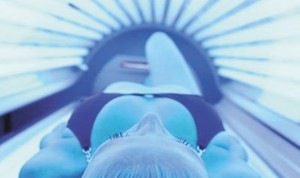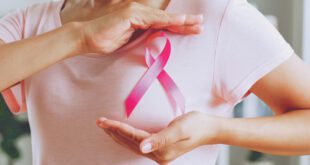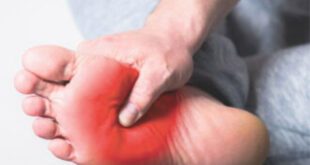NEW STUDY FINDS 1 IN 4 SKIN CANCER SURVIVORS SKIP SUNSCREEN AND CONTINUE USING TANNING BEDS
 InterCommunity Cancer Centers and InstituteOffers Tips on Preventing and Treating Skin Cancer
InterCommunity Cancer Centers and InstituteOffers Tips on Preventing and Treating Skin Cancer
Most of us would assume that patients who survive a cancer scare will do whatever it takes to prevent it from potentially returning. However, one startling study by the American Association for Cancer Research (AACR) shows that one in four people who have had melanoma do not use sunscreen when outside for more than one hour. The findings, presented at AACR’s annual meeting in Washington this past April, also showed that two percent of melanoma sufferers still use tanning beds – something that has been widely researched and reported to lead to skin cancers.
Experts at InterCommunity Cancer Centers (ICCC) and Institute (ICCI) of Leesburg, Lady Lake and Clermont are giving skin cancer survivors and avid sunbathers a wake-up call this spring and summer to remind them about the importance of applying sunscreen and receiving regular screenings to protect themselves against skin cancer.
According to the ACS, more than two million cases of basal and squamous cell skin cancer are found in the U.S. each year. Melanoma, the most serious type of skin cancer, will account for approximately 76,600 cases of skin cancer and more than 9,000 of the 12,000-plus skin cancer deaths estimated for 2013.
“This new study is both shocking and disappointing for me to hear,” said Hal M. Jacobson, M.D., medical director of ICCC/ICCI. “It is critical that we continue to educate skin cancer survivors as well as sun lovers that melanoma never takes a day off. And just because you beat it the first time does not guarantee that you will again.”
The ACS’ website identifies numerous risk factors, signs and symptoms and important prevention tips regarding skin cancer including the following:
WHAT ARE THE RISK FACTORS FOR SKIN CANCER?
Risk factors for non-melanoma and melanoma skin cancers include:
• Unprotected and/or excessive exposure to ultraviolet (UV) radiation (sunlight or tanning booths)
• Pale complexion (difficulty tanning, easily sunburned, natural red or blond hair color)
• Occupational exposures to coal tar, pitch, creosote, arsenic compounds, or radium
• You or other members of your family have had skin cancers
• Multiple or unusual moles
• Severe sunburns in the past
WHAT ARE THE SIGNS AND SYMPTOMS OF SKIN CANCER?
Skin cancer can be found early, and both doctors and patients play important roles in finding skin cancer. If you have any of the following symptoms, tell your doctor.
• Any change on your skin, especially in the size or color of a mole, growth, or spot, or a new growth (even if it has no color)
• Scaliness, oozing, bleeding, or change in the appearance of a bump or nodule
• The spread of pigmentation (color) beyond its border, such as dark coloring that spreads past the edge of a mole or mark
• A change in a mole’s sensation, such as itchiness, tenderness, or pain
CAN SKIN CANCER BE PREVENTED?
The best ways to lower the risk of non-melanoma skin cancer are to avoid long exposure to intense sunlight and practice sun safety. You can still exercise and enjoy the outdoors while using sun safety at the same time. Here are some ways to be sun safe:
• Avoid the sun between 10 a.m. and 4 p.m.
• Seek shade: Look for shade, especially in the middle of the day when the sun’s rays are strongest. Practice the shadow rule and teach it to children. If your shadow is shorter than you, the sun’s rays are at their strongest.
• Slip on a shirt: Cover up with protective clothing to guard as much skin as possible when you are out in the sun. Choose comfortable clothes made of tightly woven fabrics that you cannot see through when held up to a light.
• Slop on sunscreen: Use sunscreen and lip balm with a sun protection factor (SPF) of 15 or higher. Apply a generous amount of sunscreen (about a palmful) and reapply every 2 hours and after swimming, toweling dry, or sweating. Use sunscreen even on hazy or overcast days.
• Slap on a hat: Cover your head with a wide-brimmed hat, shading your face, ears, and neck. If you choose a baseball cap, remember to protect your ears and neck with sunscreen.
• Wrap on sunglasses: Wear sunglasses with 99% to 100% UV absorption to provide optimal protection for the eyes and the surrounding skin.
• Follow these practices to protect your skin even on cloudy or overcast days. UV rays travel through clouds.
• Avoid other sources of UV light. Tanning beds and sun lamps are dangerous. They also damage your skin in other ways.
“Proper protection, self-examination and regular skin cancer screenings can save so many lives, and they require a minimum amount of time and effort,” said Dr. Alison Calkins, radiation oncologist at ICCC/ICCI. “We must remain vigilant about these examinations and contact your physician should you have any questions about skin cancer prevention or if you detect any of the warning signs.”
THE EXPERIENCE OF INTERCOMMUNITY CANCER CENTERS
ICCC has 25 years of cancer-fighting experience having treated over 10,000 patients. They are dedicated to empowering patients to have the confidence they need to change their lives. Radiation Oncologists Drs. Hal Jacobson, Herman Flink, Maureen Holasek and Alison Calkins bring exceptional expertise in treating breast, lung, prostate, gynecologic, skin and other cancers.
As part of a larger, nation-wide oncology group of physicians and specialists under Vantage Oncology, the oncologists at ICCC have access to aggregated clinical information and best practices from the treatment of more than 1,000 patients per day, enabling them to develop highly-effective and peer-collaborated treatments. This gives many of the centers that work with Vantage, including ICCC, the ability to offer university-quality treatment services in smaller and more rural areas. It gives local communities exceptional services closer to home and in a non-hospital setting. To learn more, please visit www.ICCCVantage.com.
 Central Florida Health and Wellness Magazine Health and Wellness Articles of the Villages
Central Florida Health and Wellness Magazine Health and Wellness Articles of the Villages



